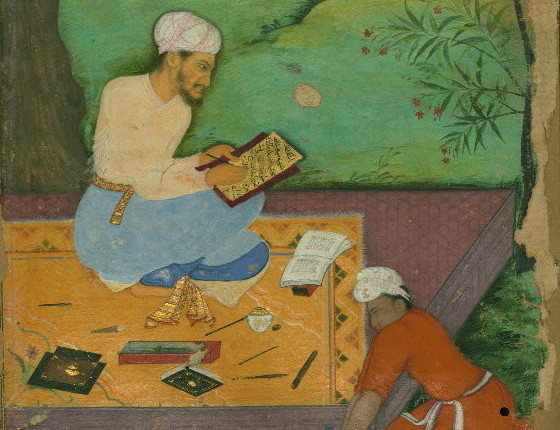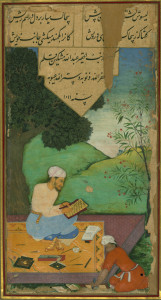
Date/Time
Friday, October 16, 2015
9:30 am PDT – 5:15 pm PDT
Location
Royce Hall, Room 314
10745 Dickson Plaza
Core Program 2015–16
The Frontiers of Persian Learning: Testing the Limits of a Eurasian Lingua Franca, 1600–1900
Conference 1: The Geographical Frontiers of Persian Learning
—a conference organized by Nile Green, University of California, Los Angeles
The first conference in the series tests the frontiers of Persian’s linguistic geography by reconstructing the mobility of Persian east into India, China, and Southeast Asia and west into the Ottoman Empire and northern Europe. By following the journeys of texts and text-producers, the conference asks speakers to identify the limits—indeed, the breakage points—of Persian’s usefulness as a medium of affinity, understanding, and interaction. Was Persian anchored to a geographically delimited region, or was it capable of following the settler routes of its users worldwide like other global languages? Is it meaningful to conceive Persian as possessing language borders, or did it function mainly in informational orders characterized by multilingualism and translation? What, if any, were the diminishing social or intellectual returns of its spatial expansion? Indeed, how should Persian be spatialized and its relationship to different layers of place be conceived? What functions could Persian perform and not perform in these different contexts? At the same time as the conference maps the furthest expansion of Persian, it, therefore, serves as an exercise in tracing the constraints of the cosmopolitan.

Speakers
David Brophy, University of Sydney
Devin DeWeese, Indiana University
Purnima Dhavan, University of Washington
Thibaut d’Hubert, University of Chicago
Graeme Ford, Macquarie University
Murat Umut Inan, Ahmanson-Getty Fellow
Arash Khazeni, Pomona College
Mana Kia, Columbia University
Paul Wormser, Institut national des langues et civilisations orientales
Image
Portrait of the scribe Mīr ʿAbd Allāh Kātib in the company of a youth burnishing paper, with the scribe holding a piece of paper giving his name, the place of copying (Allāhābād), and the date 27 Muḥarram 1011 AH (1602 CE); from Collection of Poems (divan), written by Amir Najm al-Din Hasan Dihlavi
Walters Art Museum Ms. W.650, folio 187a
Please note: On October 15, 2015, the UCLA Program on Central Asia is hosting a lecture by Kevin Schwartz on “The Persian Tazkirah, 1700–1900.”
Program
9:00 a.m.
Morning coffee and registration
9:30 a.m.
Barbara Fuchs, University of California, Los Angeles
Welcome
Nile Green, University of California, Los Angeles
Opening Remarks
9:45 a.m.
Session 1: Oceanic Frontiers
Chair: Sanjay Subrahmanyam, University of California, Los Angeles
Mana Kia, Columbia University
“The Necessary Ornaments of Place, or, Mapping off the Geocultural Persianate Grid”
Paul Wormser, Institut national des langues et civilisations orientales
“The Limits of Persian Influence in the 17th-Century Malay World”
Arash Khazeni, Pomona College
“The City and the Wilderness: Indo-Persian Travel Writing and the Forest Worlds of Imperial Burma”
Discussion
11:45 p.m.
Lunch
1:00 p.m.
Session 2: Inner Asian Frontiers
Chair: Nile Green, University of California, Los Angeles
Devin DeWees, Indiana University
“Literary Frontiers and Languages of Learning in Muslim Inner Asia: Persian and Turkic from Kazan to Turfan, 16th–19th Centuries”
Graeme Ford, Macquarie University
“Persian Translating at the Ming Court”
David Brophy, University of Sydney
“The Place of Persian in Qing Inner Asia”
Discussion
3:00 p.m.
Coffee Break
3:15 p.m.
Session 3: Imperial Frontiers
Chair: Kevin Schwartz, United States Naval Academy
Murat Umut Inan, Ahmanson-Getty Fellow
“Persian in the Ottoman Empire: Reflections on Imperial Language, Identity, and Culture”
Purnima Dhavan, University of Washington
“A Topography of Persian in Mughal Punjab”
Thibaut d’Hubert, University of Chicago
“Persian in the Village: ‘Popular’ Uses of the Persian Language and Vernacular Literature in Rural Bengal, ca. 17th–19th Centuries”
Discussion
5:15 p.m.
Reception
Booking Form
Bookings are currently closed for this event.

